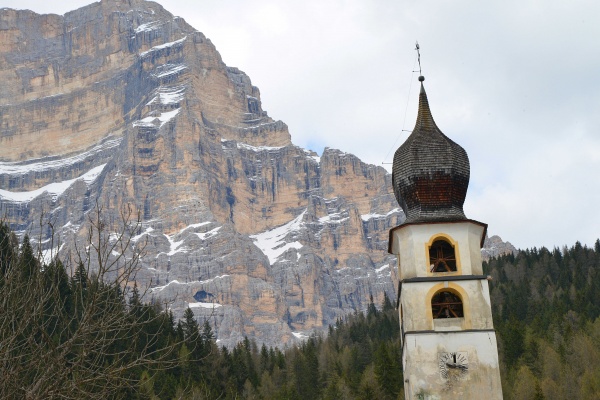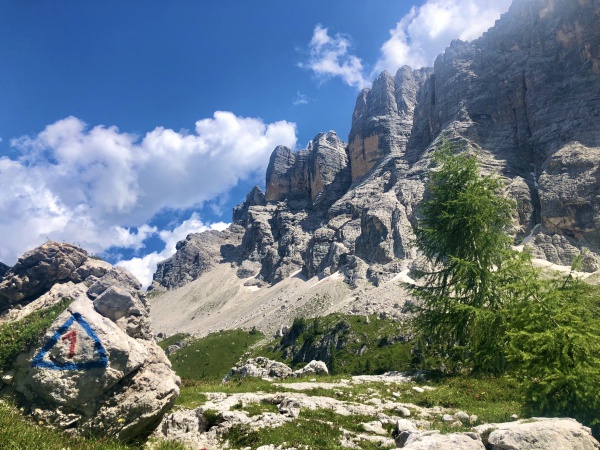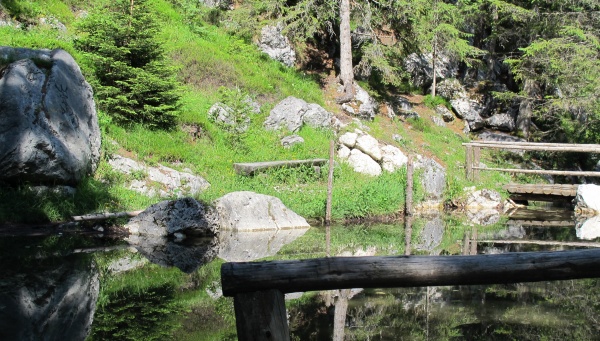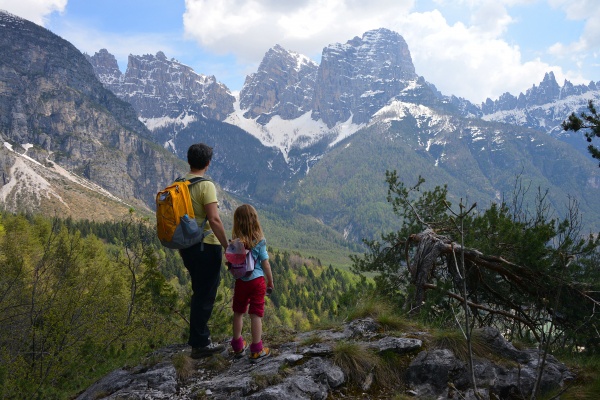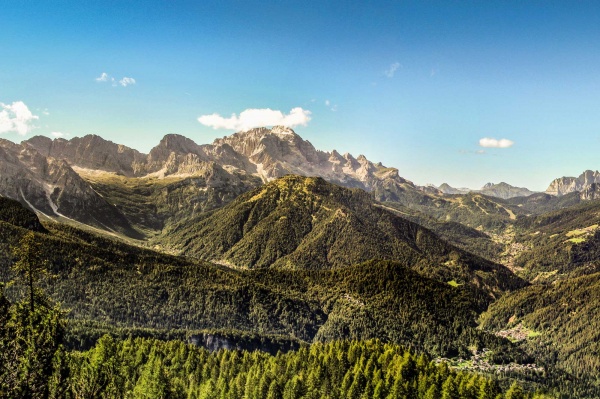The mount Moiazza is the southern, most forbidding offshoot of the Mount Civetta chain. It is bordered to the east by the Giona Valley (Val de Zoldo) and to the west by the Agordino area. The solemn amphitheatre that stands out against the surrounding valleys starts in the north near the Sasse Saddle (2476 m), where it separates off from the rest of the Civetta, and runs to the Sass del Duran (2578 m) near the Duran Pass, which separates it from the San Sebastiano Group.
A particular favourite with mountaineers and climbers, it boasts a wealth of climbing routes; its sunny southern slopes are very popular for their excellent exposure and the relatively short routes. Also worth a mention are the massive western slopes that stretch up an impressive height of 900 metres at the Castello delle Nevere peak.
One of the most enthralling – and challenging – vie ferrate in the Dolomites, the ferrata Costantini, starts out near the Carestiato Refuge and climbs up to the top of the Moiazza, running along the Masenade Crest, and descending back down the Val dei Cantoi.
The highest peaks are the Moiazza South (2878 m) and the Cima delle Sasse (2.878 m).
Hikers and mountaineers will find two unguarded bivouacs: the Ghedini bivouac on the Nevere Saddle, and the Grisetti on the Vant de Moiazza saddle.
Easily reachable from the Duran Pass (about an hour’s walk) and looking onto the Val Cordevole, the Carestiato Refuge sits at an altitude of 1834 m on the Col dei Pass. It can also be reached from the west, coming from the Vazzoler Refuge.
Points of interest
The Moiazza offers visitors a wealth of incredibly beautiful itineraries to explore, amid a unique, unforgettable landscape. Especially fascinating are the labirinti (labyrinths), which only those perfectly familiar with the area will be able to guide you to: a gorge hidden amid the rocks, with traces of paths that lead to the Vant de Moiazza saddle through rock leaps, short climbing stretches and extremely narrow passages.
Another point of interest is the marvellous Spisolot della Moiazza, the waterfall - also visible from the Goima Valley – that springs from the heart of the mountain.
Particularly striking is the Vant de le Sasse, a basin that lies between the Moiazza and Civetta, where the evolution from one geological era to the next is clearly visible on the rocks that are home to the numerous marmots that live here undisturbed.
Not everyone is aware that in one of the scree-covered slopes of the Moiazza, at a point difficult to reach, a boulder was found with dinosaur prints, although not as well preserved as the ones discovered on Monte Pelmetto.
Thanks to the Val di Zoldo section of the Italian Alpine Club for their invaluable collaboration in preparing the material.













